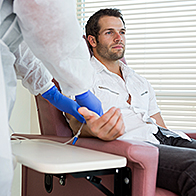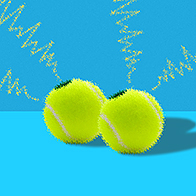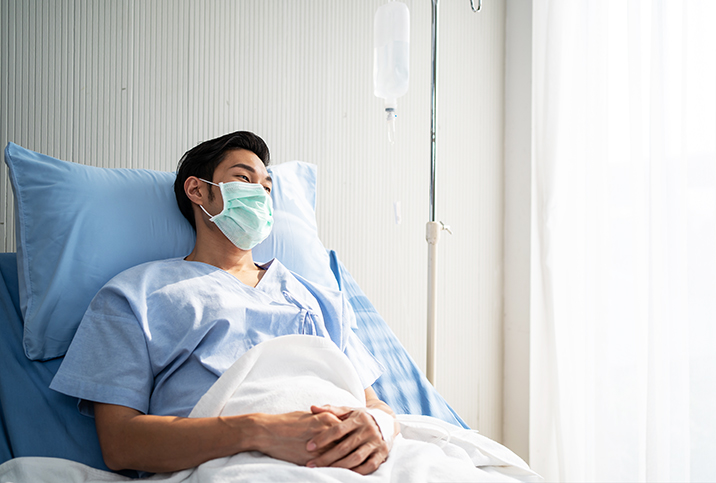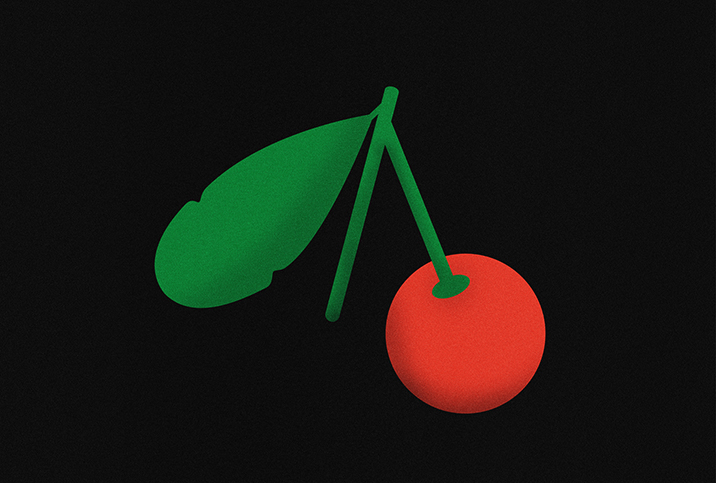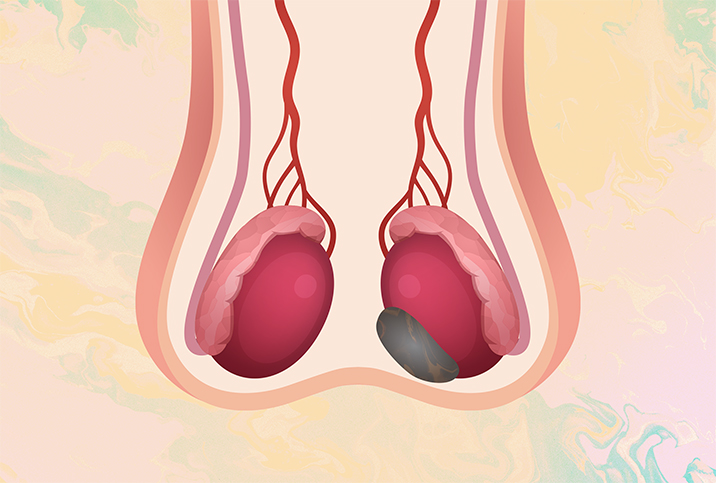What the Hell Is Chemo for My Balls Going to Do to Me?
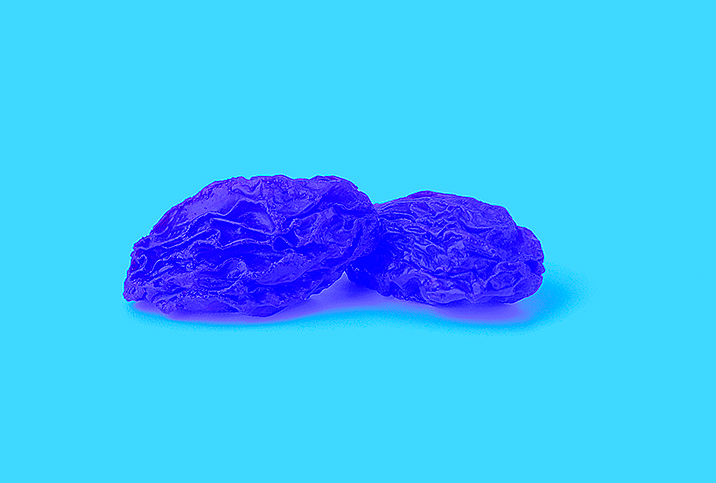
Cancer is no fun. Duh.
No one's ever going to say, "Hey, great news: You have cancer!"
Despite the obvious, there are silver linings, even with such a dire topic. For instance, if your diagnosis is testicular cancer, consider yourself—no matter how difficult it may feel—lucky.
That's because it's one of the most treatable and survivable kinds of cancer. Through the strategic use of surgery, radiotherapy and chemotherapy, testicular cancer has a five-year relative survival rate of 95 percent, according to the American Cancer Society. If you detect it early, that percentage climbs to 99 percent.
Here's what guys with testicular cancer need to know about chemotherapy, one possible component of their treatment.
We have good news, bad news
The good news is the structure of the male anatomy conveniently keeps the testicles segregated from the rest of the body, so testicular cancer often remains isolated if it is detected early. This anatomical fact has helped doctors craft a modern-day fairytale, complete with a happy ending for hundreds of thousands of men using modern chemotherapy.
"Going back even 50 years ago, the cure rate for testicular cancer was not very good," said Richard Heppe, M.D., a urologist with the Urology Center of Colorado in Denver. "Once it had metastasized [spread], there was a pretty high death rate. Now, it's probably the greatest story of cancer care there is. The death rate went from 90 percent mortality to 1 percent mortality because they came up with these extremely effective chemo regimens."
'When we find any kind of mass on the testicle that's considered to be testicular cancer, the first step is removing that mass.'
The bad news is the testicle has to go, buddy. The cost-benefit analysis for keeping a possibly cancerous testicle and attempting to treat it in other ways doesn't add up, not when an orchiectomy—surgical removal of one or both testicles—is such a relatively simple and low-risk procedure.
"When we find any kind of mass on the testicle that's considered to be testicular cancer, the first step is removing that mass," said Jayram Krishnan, D.O., a urological oncologist whose practice is affiliated with the Cleveland Clinic. "So removing the entire testicle is the first thing we do."
After the surgery
Once the testicle is removed, it's tested to determine whether the mass is cancerous and, crucially, what kind of cancer it is. The two main types of testicular cancer—seminoma and nonseminoma—have different treatment protocols.
"Seminoma is susceptible to radiation therapy," Heppe said. "Nonseminoma requires chemotherapy."
Yet another positive piece of the treatment puzzle is that, like your grandpa who refuses to go to any restaurant besides Cracker Barrel, testicular cancer follows a very predictable path.
"Testicular cancer likes to spread directly into the abdomen, into the lymph nodes," Krishnan said. "So if we determine that it has gone into the lymph nodes, then certainly chemo is an option."
Once the oncology team knows the type of cancer, they will likely have you undergo a CT (computed tomography) scan to determine whether your lymph nodes are enlarged.
"Then you do blood tests to look at what are called the tumor markers, because different types of testicular cancer will cause different types of elevation in different blood tests," Heppe said.
What's chemo like?
The course of treatment depends on the individual, so every case is different. The desired approach depends on the type of cancer, how far it has progressed and where it's located.
"There are different strategies that range from no chemotherapy to a single dose of chemo to four cycles where you're going to be getting one week per month for four months," Heppe said. "So the more treatment you get, the more side effects you're going to have."
Another advantage for men now is that chemo's effects are usually much more tolerable than in years past.
"The regimen for testicle tumors is not bad at all on your body," Krishnan said. "It's pretty mild. It can cause your white blood cell count to go down or it can cause different changes to your heart."
Other considerations
Both Krishnan and Heppe emphasized that men who plan to have children should bank sperm—freeze and store it for future use—before beginning treatment. While one testicle is generally sufficient to produce enough viable sperm for reproduction, the presence of testicular cancer can indicate the man may already have suboptimal sperm quality.
"Guys with testicular cancer usually will have abnormal semen analysis even before you do anything," Heppe said. "It's most likely related to whatever genetic defect has led them to develop testicular cancer also causing other changes in their testicles."
Additionally, chemotherapy can damage the remaining testicle, which in turn can affect sperm production. Thus, hitting a sperm bank beforehand is a must if you plan to have kids.
Conclusions
It's important to remember that any cancer treatment is a plan you create with your doctor. Everyone's situation is different—and everyone should take an active role in consulting their medical team.
"The question should be, 'Do I need chemo?'" Krishnan said. "And what are my survival chances with or without chemo? Am I extending my survival or cancer-free rate by taking chemo?"
If chemo is on the menu, Heppe reminds patients that the story of professional cyclist Lance Armstrong's testicular cancer didn't end when he had a testicle removed—he also received chemo.
"Before he raced in a single Tour de France, he had metastatic testicular cancer that went to his brain and his lung," Heppe said. "And he was cured of that and went on to win seven Tour de France [races]. Of course, he was doping, but that's another story."
The medical moral to that story is chemotherapy can be an effective and tolerable treatment choice if you're diagnosed with testicular cancer. The course may have peaks and valleys, but you have a team to guide you through the ride.







